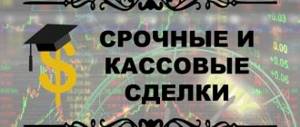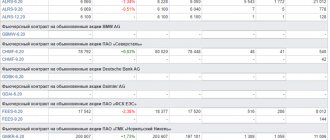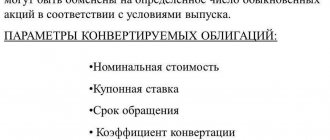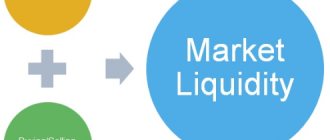Newcomers often have a question: what is spot and futures trading, what is the difference between them and in what cases one or another trading method is used. The editors of Profinvestment.com propose to consider the features of both options; we will also give examples of cryptocurrency exchanges that support work with spot and futures transactions.
Although spot trading is recommended for novice traders as a simpler and more understandable option, the cryptocurrency derivatives market is also actively developing. In just a few years, it has grown significantly; many spot exchanges have launched a section or even a separate platform with futures. As a result, trading volumes in these areas are increasing at a rapid pace.
Types of markets
The main types are the market for forward (terms) contracts and the spot market at the price of supply/demand on the spot. Below are the main definitions.
Urgent
Trading of derivatives and derivative instruments is carried out here. A class of financial instruments that provide for future delivery of an underlying asset. The most liquid and common are futures and options.
The underlying assets are securities, commodity groups, metals, petroleum products, currencies, and indices. Contracts have an expiration date. Hence the name.
On the Moscow Exchange, the derivatives section is called FORTS. The history of its creation begins at the St. Petersburg Exchange, then entered the RTS, and after merging with the MICEX, a division of the Moscow Exchange.
Information on instruments and trading results on the site page.
Spot
The agreement of the parties to buy/sell in the usual sense is the spot market. The parties agree on a price and enter into a deal at the agreed price. The buyer pays, the seller delivers the goods.
Payment in cash. The seller must have the goods in stock, and the buyer must have money. These are mandatory conditions for the spot regime. Buying groceries in a store with immediate payment at the checkout and buying shares on the stock exchange at the bid/ask price are spot transactions.
Similarities and differences between the spot market and the derivatives market
Basic:
- The spot regime provides for the mandatory availability of goods from the buyer and the entire contract amount from the seller. Forward contracts do not necessarily require delivery of the underlying asset upon expiration. Deliverable futures provide for the shipment of goods after the expiration of the contract term, futures without delivery (the so-called “out of money”) - settlement between the parties only in cash.
- Derivatives do not provide the same ownership rights as the underlying asset in the spot market. First of all, this applies to stocks. Forward contracts for, for example, shares of Lukoil or Gazprom do not give the holder the right to dividends or participation in the management of the company, or voting rights. Valid for all futures and options on securities worldwide. Derivatives are virtual financial instruments. Without taking into account deliverable futures, the main purpose of derivatives is as instruments of speculation and hedging.
- The basic concept of spot mode is immediate settlement after the transaction. The parties enter into an agreement at the market price, followed immediately by payment from the buyer. And delivery of goods by the seller under the terms of the contract. By its nature, a derivative instrument does not require immediate settlement. Final settlement between the parties in the future at expiration. To open it, it is enough to provide a guarantee. The size is determined by the rules of the exchange and broker.
Features of derivative contracts and examples of futures exchanges
Key Features of Futures Trading:
- Prices differ from spot prices due to additional costs: storage costs, taxes and damages, if any, costs for blocking funds, etc. To match spot prices as closely as possible, prices in the futures market are adjusted from time to time (this is called funding, usually every 8 hours).
- A specific settlement date has been established for the underlying asset. The trader agrees to buy or sell a contract at some point in the future. It is possible to extend the contract or cancel it.
- A more structured approach, low latency, and higher leverage than spot.
There are several different types of derivative contracts. Let's talk about the main ones.
Futures – allow a trader to enter into an agreement to buy and sell cryptocurrency at a pre-agreed price and at a certain time.
Perpetual contracts are the same as futures, but without an expiration date. They last forever. The price is closest to the base price.
Swaps are the exchange of one financial instrument for another at a given point in time.
Options are similar to futures with the difference that they give the trader the right, not the obligation, to buy back an asset.
Examples of derivatives cryptocurrency exchanges:
- Binance Futures. 162 contracts. Trading volume for 24 hours is $83,421,342,003.
- FTX Derivatives. 1046 contracts. Trading volume for 24 hours is $15,563,413,105.
- Bybit. 15 contracts. Trading volume for 24 hours is $17,200,749,478.
- Bitmex. 92 contracts. Trading volume for 24 hours is $4,383,268,388.
- Deribit. 41 contracts. Trading volume for 24 hours is $2,865,412,187.
Trading derivatives on the BitMEX exchange
What does spot price mean?
A spot market is a market in which transactions take place without pre-arranged agreements, that is, in a given period of time. Delivery takes place within two working days. The spot price is the price of an asset established at the time of the current transaction. In other words, the buying party transfers funds to the selling party, which, in turn, makes a subsequent delivery.
There are the following types of spot prices, the classification of which depends on the deadline for fulfilling obligations related to delivery:
- TOD (Today) provides for the exchange of goods for money on the same day.
- TOM (Tomorrow) provides for next day delivery.
- SPT or a transaction where payment occurs within two business days.
It's worth noting that TOD is cheaper than TOM, and TOM is cheaper than SPT. The difference between them is that each subsequent one adds to the price of the previous one an amount equal to the key rate, which is divided by the number of days in a year.
For the same reason, futures contracts are more expensive than spot transactions.
The spot market allows for instant cash exchange. Supply meets demand, the selling and buying parties meet, after which the asset is transferred from the seller to the buyer.
Types of transactions - the difference between them
Although spot transactions are supposed to be paid instantly, there are types that allow you to defer payment. Then the date on which the money for the transaction is transferred is called the value date.
The following payment options are possible:
- TOD. From the English “today” - today. Payment is made within the day of the transaction.
- TOM. From the English “tomorrow” - tomorrow. Payment is scheduled for the day following the transaction.
- SPT. This type is also called a spot transaction or T+2, which means payment two business days after the conclusion of the contract.
To understand, TOD is cheaper than TOM, which, in turn, is cheaper than SPT. The difference between them is that each subsequent one adds to the value of the previous one the size of the key rate, divided by the number of days in the year.
For the same reason, futures are more expensive than spot transactions.
What is Spot Price?
A spot price is the current price in the market at which a given asset, such as a security, commodity or currency, can be bought or sold for immediate delivery. While spot prices are specific to both time and place, in a global economy the spot price of most securities or commodities tends to be fairly uniform around the world. Unlike the spot price, the futures price of a security, commodity or currency is the expected value at a specific future time and place.
Forward transactions in the foreign exchange market
Over the past 10-15 years the derivatives segment of the foreign exchange market , represented by forward transactions, futures, swaps, currency options and their varieties and combinations, has gained widespread development. The common feature for all of them is that the delivery time for currency (if it occurs at all) exceeds two business days, and their characteristic feature is that they are drawn up in standardized documents (contracts) that have legal force for a certain period (from signing to payment) and themselves become objects of purchase and sale on the foreign exchange markets. These documents are called currency derivatives. These primarily include forward and futures contracts and options.
Forwards or forward contracts are concluded between the parties to a transaction with the condition of exchanging a certain amount of currency at previously agreed upon quotes on a predetermined day (value date). The transaction will be executed regardless of what the current prices are on the spot market.
Futures differ from regular forwards in that they have standard maturities (value dates) and fixed contract sizes, allowing them to be traded on the futures market like regular securities.
Options have weak (relative to futures) obligations of one of the parties to the contract, that is, the owner of the option can refuse to redeem the contract, losing only the amount paid for the option or the so-called premium. This type of derivatives is also traded on a separate options market.
Futures transactions are relatively “new” in the foreign exchange markets (appeared in the 70-80s of the twentieth century), but they are developing quite rapidly. This is primarily due to significant fluctuations in exchange rates, and, accordingly, with significant currency risk. Urgent conversion transactions not only allow you to hedge currency risk, but can also be a source of very significant speculative profits. A peculiar “hybrid” of the above-mentioned current and forward currency transactions are “swap” transactions. Currency swap is a currency transaction that combines the purchase or sale of a currency on spot terms with the simultaneous sale (or purchase) of the same currency for a certain period on forward terms, that is, a combination of two opposite conversion transactions is carried out on identical amounts, but with different value dates. Just like forward transactions, futures and options, they allow, firstly, to insure risks, and secondly, to receive additional income by taking on a risk corresponding to the expected profit.
Spot or Forward?
Spot transactions are not immune to currency risk and exchange rates are based on direct quotations. On the contrary, Forward is one of the ways to reduce currency risk . The exchange rate in this case is hedged on the date of conclusion of the contract in accordance with the current quote and cannot change regardless of the situation on the foreign exchange market. Forward transactions are most often concluded for specific periods of time : a week, 2 weeks, a month, a quarter, a year. However, most banks allow these transactions to be concluded within an individually agreed upon time frame.
When deciding on foreign exchange transactions, you should familiarize yourself with the types of them in advance. Currency risk protection can significantly reduce transaction costs, which is why it is so important.
Features of trading on the spot market
Let's look at some features of the spot trading mode.
How does the deal work?
Stages:
- The trader places an order to buy or sell. Determines the volume in lots in accordance with the specification of the instrument being traded. The order price can be different depending on the type of trading order - at the market price, if certain conditions are met (stop order, take profit, iceberg order). The order can be transmitted manually or through a special trading program - orders are generated by a robot according to a preset algorithm.
- A deal is concluded based on the supply/demand price. The asset is debited from the seller's account. Money for the entire volume is deposited (reserved) from the buyer's account. In normal T+2 trading mode, final settlement occurs within 2 business days.
- If the subject of the agreement was shares, the ownership right is transferred to the new owner electronically at the depository.
Trading rules on the spot gold market
Spot gold contracts are described in the specifications. Example - GOLD on LME. 100 troy ounces.
The minimum volume on the LME is 1000 troy ounces. Payment in US dollars. The physical parameters of the bullion are determined by the LGD (London Good Delivery) standard. The main requirements include weight (350-450 ounces), metal purity (995 and above), ingot shape, permissible concavity dimensions, markings.
Features and examples of spot exchanges
Main characteristics of spot trading:
- Exact cryptocurrency rates are used, which directly depend on the ratio of supply and demand in the market.
- Instant settlement of trades as soon as two matching orders on similar terms are matched.
- Trading on the spot market is often slower and more expensive, and profit is a vague concept.
Examples of spot cryptocurrency exchanges:
- Binance. Operating from 2021. 1039 trading pairs. Trading volume for 24 hours is $45,267,511,850.
- Huobi. Operating since 2013. 898 trading pairs. Trading volume for 24 hours is $13,885,895,615.
- OKEx. Operating since 2013. 506 trading pairs. Trading volume for 24 hours: $11,018,253,836.
- Currency.com. Operating from 2021. 442 trading pairs. Trading volume for 24 hours is $166,271,198.
- EXMO. Operating since 2013. 184 trading pairs. Trading volume for 24 hours is $112,103,286.
Spot trading on the EXMO crypto exchange
Pros and cons of spot trades
The advantages include:
- high level of investor protection at the legislative level;
- transparent scheme for concluding transactions. Unlike Forex, all orders are entered into the real market;
- high liquidity for many instruments. If in Russia these are several dozen instruments, in the American market there are hundreds;
- possibility of long-term investment;
- you can make money both on price increases and decreases (long, short positions);
- the opportunity to purchase real assets - securities of world companies, precious metals.
The downside is that you can make or lose money on spot trading. This is a business with its own specifics.
Features of trading activities through the spot market
Banking organizations do not make it possible to use the deliverable foreign exchange market through a reseller license. If organizations provide such services, this will cause losses to currency exchange offices through credit histories. If clients of a banking organization receive directly foreign exchange market quotes, the bank will lose earnings on spreads at exchange offices.
If a market participant refuses to take delivery or their trading account does not contain enough funds to create a full-fledged lot, the broker's client may not take delivery. Thus, his trading account receives the “non-deliverable” status.
Advantages and Disadvantages of Spot Transactions
The positive aspects of spot transactions include:
- speed of execution. Guarantee of receiving payment for the asset within 2 days.
- availability due to the fact that spot transactions are cheaper than forward transactions, since the latter provide for a delay in settlements, and during this period the price of the asset may change under the influence of various factors, external and internal;
- Sometimes it happens that the spot price exceeds the cost of forwards and futures. In particular, as a result of increased demand.
The disadvantages include, as mentioned earlier, slippage. While the order is being executed, the price may change, causing additional costs for the buyer and losses for the seller. For this reason, forward transactions are characterized by a greater degree of reliability, since they are concluded at a predetermined cost.
Spot and forward contracts
Dependence of margin on market conditions
The state of the market (shortage or overstocking) is influenced by the volume of supplies offered (supply) and the volume of purchases (demand).
The volume of shortages or overstocking in the short term (up to one year) is influenced by the seller’s pricing policy, and in the long term (over a year) - an increase in supply due to investment in production (in case of shortages), and the entry of new buyers (in case of overstocking and low prices for goods). product). The ability to store goods in inventory for a long time without significant losses to its quality also allows you to smooth out shortage peaks (for the seller) and save money in this case (for the buyer). Since the prices for raw materials and finished products determine the cost and revenue, and the difference between them determines the accounting profit (margin), then depending on the prices of raw materials (purchased goods), the marginality of production of finished products (purchase turnover) may differ.
For this purpose, in addition to control over the volume of inventories involved in production (turnover), a pricing policy is implemented aimed at creating a fair price for the product (acceptable to the buyer when purchasing, to the seller when selling). If retail chains purchase consumer goods from suppliers at wholesale prices with a discount (bonus) for fulfilling the procurement plan, then raw materials (non-ferrous metals, oil, petroleum products, natural gas, wheat, raw sugar, etc.) and foreign currency ( to pay for imports) you cannot buy in bulk at a discount. An analogue of wholesale prices for such underlying assets in Russia are the exchange prices of the Moscow Exchange (MOEX) and the St. Petersburg International Mercantile Exchange (SPIMEX). Depending on the availability of goods in the warehouse of the seller whose goods are quoted on the exchange, there are spot and futures markets. Depending on the place where prices for a commodity are formed, the exchange market and the over-the-counter market are distinguished.
Tradable contracts on SPIMEX and MOEX
Trading is organized at SPIMEX:
- futures for agrochemicals, soda ash, timber, thermal coal, natural gas, oil and petroleum products (https://spimex.com/markets/oil_products/instruments/active/, etc.)
- futures for Urals oil, gas condensate, LPG, gasoline, diesel fuel (https://spimex.com/markets/derivatives/products/types/).
Delivery is carried out on an ex-works basis (delivery basis EXW, ex-wagon).
Trading is organized on MOEX:
- spot contracts, currency swaps for foreign currency, deliverable futures for it and precious metals (gold, silver) (https://www.moex.com/s981).
- deliverable futures, commodity swaps (for purchase) and spot contracts (for sale) of grain, soybeans, sunflower, raw sugar (https://ntb.moex.com/ru/auction/).
- futures for Brent and WTI oil, natural gas, non-ferrous metals (zinc, nickel, copper, aluminum) (https://www.moex.com/s202).
Delivery of non-currency assets is also carried out on EXW terms.
Spot and futures contracts. Underlying and derivative assets
The difference between the price of deliverable futures (forward) and spot forms a figurative “discount” or “premium” (depending on the situation) on the commodity.
In other words, it is the difference between what a product will cost in a few months and what it costs now. In simple words, if within the framework of a direct contract (seller - buyer) the discount is formed by the volume of delivery (order), then in the conditions of a commodity (currency) exchange, this price difference is formed by the period of time and the state of the market.
Exchange-traded commodities and foreign currencies are the underlying assets that are traded in spot transactions, deliverable futures and forwards, options and swaps. And futures, forwards, options and swaps are derivative assets or derivatives (from the English derivative - derivative). The conditions for making spot and forward transactions are determined by the exchange rules of organized trading. The underlying assets are standardized. The scope of supply, delivery basis, quality of goods, delivery dates are predetermined in the contract specification. Due to the fact that contracts are standardized, purchases and sales within the same exchange cover each other.
Exchange arbitrage. Marginal dependence of the manufacturer on the spot and derivatives market
The difference between exchange prices of the domestic market and prices of foreign exchanges (ICE, LME, CME Group, LBMA, SHMET, etc.) forms exchange arbitrage
(the difference in prices on exchanges for the same underlying asset).
For global spot and commodity futures prices on a daily, weekly, monthly and year-to-date basis, visit Trading Economics
( https://tradingeconomics.com/commodities ).
For commodity futures quotes, see also the website https://ru.investing.com/.
Depending on the difference between domestic and world prices,
the profitability of exports (imports) of raw materials
(crude oil, non-ferrous metals, grains, etc.)
Since prices for raw materials determine the cost of production of finished products, and the difference between it and the final price is the profit of the enterprise, the purchase of raw materials at exchange prices has a significant impact on the specified cost and profit. In simple words, if domestic copper prices are lower than spot prices on the LME, then it is more profitable for a Russian copper producer to export copper at world prices, having undergone LME certification and insuring itself against a drop in price with a delivery futures contract. If a Russian resident wants to save money when purchasing diesel fuel, then he sells a deliverable futures contract for diesel fuel on SPIMEX and insures himself against price increases with a settlement call option on the same futures, and the positive difference between spot prices on the opening date and on the execution (expiration) date of the futures goes away to the resident's profit. Or in a situation where domestic prices for frozen beef are higher than world prices, it is more profitable for a Russian meat processor to take the same position on Bm&fBovespa and import frozen beef from Brazil.
To achieve a profit or minimize a loss on a transaction (futures position), a resident can purchase a settlement option on the opposite position, upon expiration of which he will compensate for his loss (if any).
In addition to price savings for the buyer, access to exchange trading in commodities eliminates the need for its manufacturer to find buyers:
such a buyer will be an exchange participant (trader, broker or their client).
In addition, certification of a product (brand) by an exchange allows its manufacturer to apply spot quotes from the exchange to their product (since it is standardized).
In this connection, such a manufacturer can sell the produced raw material at spot prices on the commodity exchange on the delivery date.
At the same time, the buyer of a contract traded on an exchange ensures the removal of the raw material from the manufacturer’s warehouses or the exchange’s warehouses, which solves logistics issues for the manufacturer.
Thus, spot and forward contracts benefit both the buyer and the producer.
Spot market
Spot transactions are operations for the purchase (sale) of goods (basic financial instruments) with settlement for them up to two business days (up to 2 T, where T is today or today).
A spot transaction is the opposite of forward transactions, in which payment is not made upon conclusion
transactions, but only after a certain
period (stipulated in the contract).
Often spot transactions are also called cash or cash transactions. These include all transactions for which settlements take no more than two banking days, namely:
- transactions like TOD
(from the English today - today). Payment for them occurs directly on the day of conclusion (T+0); - transactions like TOM
(tomorrow - tomorrow). Payment for them is made the next day after the conclusion (T+1); - transactions like SPT
(from English spot - place, point). Payment for them occurs on the second banking day after conclusion (T+2).
TOD, TOM and SPT contracts, despite the fact that they are all spot contracts, have different prices. The closer the settlement date, the lower the price and vice versa.
So the lowest price of them is the transaction type TOD, then comes TOM and the highest price for the SPT transaction.
In fact, the difference in prices is quite insignificant and is determined by the size of the key rate divided by the number of days in a year.
Thus, for TOD transactions, settlements are carried out at the cash price (spot price), for TOM transactions, the price is determined as the sum of the cash price (on the day of conclusion) and the key rate for one day, for SPT transactions, the price is calculated as the sum of the cash price and the key rate for two day.
The spot price, also called the spot price, reflects the value of the actual commodity (the underlying financial instrument) at a given time, in a specific location, if it were to be delivered here and now.
If the customer does not wish to receive the delivery or does not have enough funds in his account to pay for the delivery, he has the right to refuse the delivery
, having assigned your account the status of “non-deliverable” in advance.
Then his TOM will carry over indefinitely
without ever becoming a TOD contract.
The spot market differs from the futures market in that the price in the futures market depends on the cost of storing goods and future price movements
.
In the spot market, prices depend solely on current supply and demand
, making them more volatile. This is why futures on the derivatives market are more expensive than the underlying instruments. Another factor that influences spot market prices is the physical properties of the goods, in terms of whether they are perishable or not.
Non-perishable goods such as metals will be traded at a price that reflects the future
price dynamics.
Prices for perishable goods such as grains or fruits will depend on current
supply and demand.
For example, tomatoes purchased in July will reflect the current surplus in the market and will be less expensive than in January, when demand exceeding supply will cause prices to rise. That is, a buyer cannot buy tomatoes for January delivery at prices in July, making them an ideal example of a commodity traded on the spot market. A distinctive feature of the spot market is the instantaneous execution of transactions for the purchase and sale of goods. In the spot market, the price of the goods is closest to the conditions at the time of sale, the buyer receives ownership at the time of purchase of the goods, and the seller immediately receives cash in the amount of the cost of the goods sold.
A feature of the spot market is also the gap between the moment of obtaining ownership of the purchased goods and the moment of actual receipt of the goods. This gap is usually 2 days.
Transactions on the spot market are made today at current prices, but the execution of transactions is delayed for several days (for the period from the moment of the transaction until the money is debited from the personal account).
In a normal market situation, when there is no rush demand for a product, the future price
is usually
higher
.
The difference between the forward/futures price and the spot price is due to the cost of borrowing and the cost to the seller of storing or delivering the commodity at a future date. This market situation is called contango.
If the market situation turns out in such a way that
the spot price
is
higher
than the forward/futures price, then this situation is called
backwardation
.
Spot prices are used:
- to assess the correctness of the chosen price of a previously concluded forward transaction.
- for issuing invoices for supplies, calculations for which use spot prices at the time of shipment of goods.
- as a starting point in discussing the price terms of transactions for the next quotation day.
Derivatives market
The essence of all forward contracts is determined by the fact that delivery and (or) final settlements are made in the future, i.e.
deferred for a certain period. And the terms of the deal are fixed now, at the moment. Depending on the method of execution, futures transactions are divided into delivery and settlement.
A delivery transaction is a forward transaction aimed at creating the rights and obligations of the parties regarding delivery
the underlying asset upon the arrival of a certain date specified in the contract.
A settlement transaction is a forward transaction aimed at creating the rights and obligations of the parties regarding mutual settlements.
based on the results of the current
price situation
on the exchange market by the deadline.
The main instruments traded on the derivatives market are forwards, futures and options.
There is the following relationship between the spot and derivatives market:
For a manufacturer who is going to produce a product in the future, the main role is played by the immediate price.
It allows the manufacturer to determine the volume of production, avoid price risk by selling goods for a period until he produces it. If there is no excess inventory in the spot market, then the spot price exceeds the term price;
if there is such an excess, the immediate price exceeds the spot price. If there is equality
current and expected prices, the immediate price must be
lower than the spot price by the amount of the risk premium
(backwardation situation).
If there is a shortage of inventory in the spot market, then there will be a case of excessive backwardation. If there is excess inventory, the forward price should be higher than the spot price
(contango situation),
but below the expected spot price.
The fixed price, which is set on the market, serves as an indicator of future economic conditions and guides entrepreneurs to expand or contract this or that production, certain operations. The term price is equal to the sum of the spot price and the delivery price.
Forward contract (forward)
The easiest to understand among forward transactions is forward.
It is practically no different from a regular purchase and sale agreement with deferred delivery and payment.
Moreover, many market participants may be parties to a forward contract without realizing it.
If you have ever entered into a sales contract in which there was a time gap between the signing of the contract and the transfer of goods and/or payment of funds, then, in essence, you were entering into a forward contract.
In contrast to a spot (cash) transaction concluded here and now, a futures contract is concluded for a certain period. The forward is such a contact.
A forward contract is an agreement for the future delivery of an underlying asset, which is concluded
outside the exchange
and for any period.
The terms of a classic forward are negotiated between the buyer and seller.
The only difference from a regular spot contract (spot transaction) is that the terms of the forward transaction are negotiated today, and delivery and final or full settlements are made after a certain period specified in the forward contract.
Classic forwards are traded on the over-the-counter market and are non-standardized
.
That is, they can have any
agreed volume, delivery basis, or quality of goods.
The subject of a delivery forward can be currency and various goods, but most often it is oil and non-ferrous metals.
The subject of the settlement forward may be interest rates, etc.
The terms of a forward contract usually contain some fixed delivery date. This type of contract cannot be terminated early by one of the parties.
transaction, except by performing
the opposite
transaction, where the seller buys and the buyer sells the contract.
As with futures, actual delivery of assets under forward contracts may not occur.
In this case,
on the date of execution of the contract, the difference
between the market price of the asset and the price specified in the contract is calculated,
and it is compensated
by one party in favor of the other.
Futures contract (futures)
Futures are marginable forwards.
A futures contract is an agreement for the future delivery of the subject of the contract. A futures contract, unlike a forward contract, is concluded only on the exchange .
The exchange itself develops its conditions.
Thus, a futures is also a symmetrical bilateral contract for the purchase/sale of a specific asset with delivery and final settlement in the future.
At the same time, the futures contract still has the property of marginability. It is this property of the contract that allows you to work in the derivatives market with leverage.
Let's start with the fact that transactions made on the exchange derivatives market are secured. Before you make a deal
of guarantee collateral
(or it is also called depositary margin)
into their personal account This amount exceeds the average daily price fluctuation for a given asset. Let two market participants, a buyer and a seller, enter into a futures contract at some point in time t.
And let the transaction price be equal to p, and let it be equal to the quotation price. The next day, the quoted price on the exchange may be higher or lower. Let's say the price turned out to be higher by a certain amount D. When recalculating in the electronic system, the buyer's account will increase by the amount D. Indeed, the buyer entered into a deal at a price D lower than the next day's market price. If the buyer closes his position (makes a sell transaction in the same volume), then a profit will be generated on his account, resulting from the price difference. Accordingly, the seller's account will decrease by the same amount D. This flow of funds between accounts is called margin movement.
And contracts for which settlements are carried out in this way, taking into account current prices, are called margined.
Thus, when making transactions with futures, market participants contribute not the full amount of the value of the asset (that which underlies the contract), but only an amount equal to 2 - 3%.
At the end of each day, the mutual obligations are recalculated at the most representative price, usually the closing price of the exchange. The resulting difference between the opening price of positions and the closing price
either credited to the investor's account or debited.
When available funds after recalculation are not enough to maintain the required depositary margin for each open position, a variation margin
- the amount that the investor must deposit into the account of the exchange clearing house before the start of the next trading session.
At the beginning of the trading day, incoming open positions are taken into account at the closing price of the previous session, since the difference has already been settled.
Such a margin trading system with an initial relatively small deposit, daily price recalculation and write-off or crediting of the difference makes trading futures contracts attractive to speculators. At the same time, futures trading is one of the riskiest activities in the investment market.
On the other hand, the futures market allows suppliers and buyers to insure (hedge) their risks associated with future price changes.
And thanks to the system of marginal contributions, participants can divert funds for insurance within an acceptable minimum.
Depending on the method of execution of the futures contract, there are:
- settlement futures - in accordance with which the parties undertake
at a specified future date,
to pay the difference between
the price specified in the contract and the market price of the underlying asset that is the subject of the futures contract. The subject of a settlement futures contract is to obtain the difference between the transaction price on the date of opening the position - the conclusion of the contract and the transaction price on the execution date. - deliverable futures - the conditions for the fulfillment of obligations under which provide obligatory delivery
underlying asset. The subject of a deliverable futures contract is the delivery of the underlying asset by the seller and payment of the cost of the underlying asset by the buyer.
Buying a future is called opening a long position, selling is called opening a short position.
So, if an investor bought five Brent oil futures contracts and subsequently sold three, his total account would be two long positions. As a result, he committed himself to supplying only two standard lots of oil. If subsequently, before the expiration of the contract, that is, before delivery, he sells two contracts, then he will not deliver oil at all. In reality, this is what happens: only a small percentage of transactions reach actual delivery.
In this case, the investor's income or loss is calculated by the exchange during the clearing process by the exchange's clearing house.
Option contract (option)
An option is a two-way agreement to transfer the right to buy or sell a specified underlying asset at a certain price at a certain time.
, an assignment of rights to the future transfer of rights and obligations occurs.
in relation to standard contracts for the delivery of the underlying asset.
There are two parties to a contract: the option buyer, the party who acquires the right to buy or sell an asset, and the seller, the party who grants the right to deliver or accept the asset at the buyer’s request.
Based on this, unlike futures and forwards, an option is an asymmetrical contract in terms of rights and obligations. In both the forward and futures contracts discussed above, the buyer is obligated to buy and the seller is obligated to sell.
In an options contract, the seller is obligated to perform the obligations under the option contract only if the buyer requests it.
Thus, two time points are identified and, accordingly, two price parameters.
The first moment is the moment of conclusion of the transaction and
the corresponding price parameter is
the premium (also known as the option price).
The second moment is determined by the buyer (who determines whether it will occur at all) when he decides whether he wants to exercise the option
.
The second price parameter is the strike price (also known as the option exercise price or
the purchase (sale) price of a commodity in the future).
The strike price (basic price) is negotiated at the time the transaction is concluded and is fixed in the option contract. These two price parameters— premium and strike—are related.
The further in time the option exercise date is, the higher the premium should be.
It is also obvious that the option price will be higher than the spot price at the moment, unless there is information in the market that the spot price of the underlying asset will decrease in the future.
So we can summarize that the options price
depends on the duration of the option contract
(the higher, the longer the term), is related to the spot price at the time the transaction is concluded , and also
significantly depends on the volatility of the market of the underlying asset
(the higher, the more the market changes).
With the help of options, they do not sell goods, but the right to buy or sell them under certain conditions.
Examples of options traded by MOEX can be seen at the link: https://www.moex.com/ru/derivatives/optionsdesk.aspx?code=MXI-3.21&sid=1&sby=1&a…
According to the period during which you can exercise the right to exercise it, options are divided into two types: American and European.
American options can be exercised any day before the expiration date
end of the contract.
European – only on the day of
contract execution.
Most of the contracts concluded in world practice are American options. They are marginable.
Call option
or a buyer's option (option call) is a standard exchange contract, which represents, on the one hand,
the right of the buyer of the option to buy
a product at a fixed price at a certain date in the future
in exchange for a premium
, and on the other hand, the obligation of the seller of the option to sell to the buyer of the option product.
Put option
or a seller's option (option put) is a standard exchange contract, which represents, on the one hand,
the right of the buyer of the option to sell
a product at a fixed price on a certain date in the future
in exchange for payment of
a premium, and on the other hand, the obligation of the seller of the option to buy from The buyer of the option is the commodity for which he receives a premium.
The underlying market for options can be either the spot market or the futures market.
An option is a very popular financial instrument in the world, which is equally convenient and interesting for both hedgers and speculators. Commodity options are one of the most common types of options.
Options, like forwards and futures, can be delivered or settled.
Delivery
An option gives its holder the right
to take physical delivery
(if it is a call option)
or to make physical delivery
(if it is a put option) of the underlying asset when the option is exercised.
Calculated
the option gives its holder
the right to receive a positive difference
as a result of settlement (
under the futures contract
underlying the call or put option). A type of settlement option is a futures option.
When the expiration date (exercise date) occurs, if the option buyer decides to exercise it, the futures option becomes a futures contract.
Thus, when the futures option is exercised, call
the holder acquires
a long position
in the underlying futures contract from the option writer and also receives cash by which
the futures price exceeds the strike price.
When a futures put option is exercised
its holder acquires
a short position
in the underlying futures contract and also receives cash by which
the strike price exceeds the futures price.
According to the rules of exchange trading, an option buyer who takes a long (short) position on an option notifies the option seller, clearing house and broker of his intention to exercise the option.
The obligation ends with actual delivery of the underlying asset.
under a delivery option,
or by transferring
a positive difference
under a settlement option (the clearing house makes financial calculations and debits funds from the account of the party obligated to transfer the funds).
Responsibility of the Option Seller
as a party to an option contract for improper fulfillment of an obligation
is limited to compensation of the option premium.
The use of options allows you to build positions with complex non-linear dependences of the profit on the position on the price of the underlying asset.
At the same time, the one who builds such a complex position gets the opportunity to choose the risk-return ratio at will.
For example, the simplest purchase of a call option allows you to obtain a position with unlimited profit potential and at the same time limited losses, which in the worst case will not exceed the premium paid for the option.
Another simple strategy: buying a put option, brings profit when the market falls or in conditions of low volatility.
* when preparing the article the following were used: https://lawbook.online/finansovoe-pravo-rossii-kniga/vidyi-birjevyih-srochnyih-9821.html https://finkredit.com/polchasa16.html
Spot Forex
Almost all Forex is spot. Even when a trader places a so-called pending order (an order to buy/sell at a certain price), it is executed immediately as soon as the price reaches it.
Forex also uses the spot rate, the meaning of which is that the price of one country's currency is expressed in the monetary units of another. Spot rates allow traders to trade quite exotic types of currencies.
The big advantage of working on spot for a Forex trader is the ability to enter into transactions both to buy and sell an asset. This creates more options for speculating on price movements. In Forex, it is usually customary to use huge leverage (for example, 1:400), but at the same time, be aware that the risk of losing your deposit increases exponentially.
Additionally, I advise you to watch this “ancient” video:
How does the deal work?
I’m keeping my promise - I’ll give an example of a spot transaction for a better understanding of what it is. Let’s say selling currency through the currency section of the MICEX exchange, and we will use the TOD and TOM types to see how you can make money on them.
So, we want to buy $1000 - 1 lot. We submit a purchase order (currency spot) - it is better if it is TOD as a quick and also cheap option. Immediately after the execution of the contract, we become the owners of the specified amount of currency in the account. It can be withdrawn to a current account and used for its intended purpose.
However, there is a second option that is more often used in the spot market. Currency can be resold for a profit. To do this, we leave the currency on the trading account and sell using TOM. After the transaction is completed, all that remains is to wait until the next day on the exchange, when TOM turns into TOD and the money falls into the account, and withdraw the resulting profit with a clear conscience (if there is any, of course).
What is spot forex, types and advantages
It is customary to call the settlement form during transactions spot, and the price at which the transaction takes place is the spot price. Instant payment for these transactions occurs, but there are types of transactions where payment can be postponed for some time. The date on which the money is transferred is called value. There are some payment options:
- TOD – payment must be made on the day the transaction is concluded.
- TOM – the day following the transaction when payment is scheduled.
- SPT – after the contract has been concluded, payment is made two days later.
Any participant in the foreign exchange market should understand what spot forex is. Without knowledge of the basics and rules, there can be no successful work. Every trader must understand the essence of market mechanisms, be able to analyze the situation and make instant decisions. More information on this topic is available on our website tradernew.pro. Let's look at the advantages of spot market activity:
- significantly cheaper compared to the derivatives market;
- there is an opportunity to make decent money, high volatility;
- instant execution of contracts, which contributes to high liquidity.
There are several negative aspects that are important to take into account when working in this direction:
- a significant increase in risk due to high leverage;
- price slippage at the peak of volatility brings considerable losses for participants;
- there is no regulation at the state level, everything falls on the shoulders of the participant.
Consider all the nuances, important aspects and aspects of this enterprise. In order not to find yourself in a rather disadvantageous position, not to lose capital and make a profit, you need to competently approach the conclusion of any transactions on the foreign exchange market.
Start making money on Forex
Definition
To understand what a spot market is, think of any marketplace where sellers provide their goods. They already have it, so the task is to sell it as quickly and profitably as possible.
When potential buyers approach, they look at the product and ask the price. If it is possible to agree on a price that suits both parties, a deal is concluded immediately.
Sellers get paid, and satisfied customers leave with the product they want. This is an example of a classic spot trade. It is characterized by the following:
- the contract is executed immediately (a maximum of two days delay is allowed);
- the product is in stock.
Such transactions are concluded on the relevant markets – spot ones. The word “spot” itself is of English origin and is translated as “on the spot.” This means that contracts are executed immediately after all the nuances have been discussed and an agreement has been reached.
In other words, the spot market is a trading platform where mutual settlements for transactions are carried out no later than on the second day after their conclusion. Such a gap in days is necessary to process payments by bank transfer.
After all, the financial market is an international structure in which traders from different countries take part. Moreover, now you can live in Russia and work, for example, on the American stock exchanges.
When buying assets there, you need to make interbank payments from one state to another. This doesn't always happen quickly. Therefore, having a short time period for mutual settlements is very important.
How to earn
The spot market allows for the use of any strategy:
- short-term;
- mid-term;
- long-term.
Some sit for days at their monitors and wait for the right moment to enter the market. Their transactions can last literally a few minutes, but the number of orders placed is impressive. The goal is to get many small advantages that would add up to a large income figure.
Others look at the stock exchange not so often - once every few days, get acquainted with economic news, do an analysis, choose the asset they like and work with it. Their positions may remain open for weeks or even months.
Still others perform global fundamental analysis, buy shares of promising companies and hold them for years, receiving dividends and waiting for when it will be profitable to sell the securities.
In the derivatives market, traders also focus on rising prices of underlying assets, but there futures and options contracts have their own specifics. Therefore, many are content with working in the simpler and more understandable spot segment.











